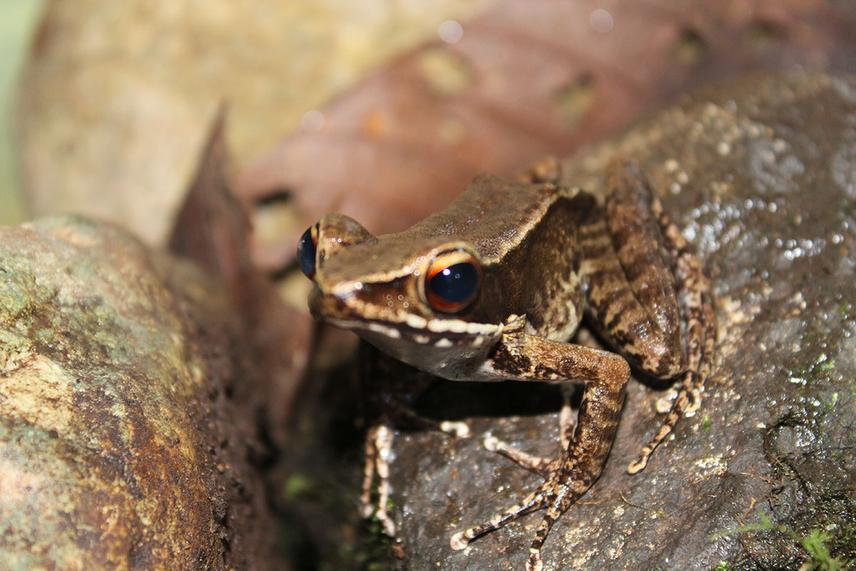Jeszianlenn L. Plaza
This project will provide knowledge on the ecology of Philippine stream anurans (frogs, toad), in particular, feeding ecology and will focus on investigating the feeding niche of sympatric stream anurans on riparian habitats of Taguibo River Watershed Forest Reserve, critically important for its ecosystem services. Anurans coexist, share niche dimensions (food, space, time) and are important consumers of stream habitats. They are significant components of riparian communities and excellent indicators of ecosystem quality. This project aims to investigate anuran prey selectivity, anuran trophic niche and interactions using stomach content and stable isotope analysis. This project will use anuran species presence and feeding ecology (trophic niche and interactions) to increase awareness and appreciation on the importance of ecosystem and forest health and its services and understand how anurans as consumers impact its habitat.

Pulchrana grandocula.
Worldwide, anuran decline associated with habitat loss is well documented. In the Philippines, there are 112 anuran species with 40 species documented in Northeastern Mindanao that are threatened with forest removal and habitat degradation. And little is known about their trophic niche or interactions and in general its trophic ecology. In NE Mindanao, 10 anurans are found in Taguibo River Watershed Forest Reserve, of this 10, 7 stream anurans occur in sympatry. Stream anurans are important components and consumers of forest stream habitats. It contributes to energy flow by controlling riparian invertebrate prey while tadpoles are known to influence sediment dynamics and algal communities. Anurans are sensitive to environmental conditions and are appropriate indicators of environment quality.
Taguibo Watershed provides important ecosystem services to Butuan City and adjacent localities – a major source of clean water, irrigation, buffer to extreme weather conditions and flood and land slide control. Threats of forest removal and habitat degradation in Taguibo Watershed is associated with economic development (e.g. road and dam construction) logging and mineral resource extraction. These activities directly or indirectly contributed to an existing water crisis, water turbidity issues and limited and intermittent water supply.
Using stomach content and stable isotope analysis, anuran prey selectivity, its association to morphology and spatial (microhabitat) use across time, trophic niche and interactions are data that this project expects to generate, to provide knowledge on feeding ecology of sympatric stream anurans on Taguibo Watershed. Ecological data of this type is particularly important if the species of interest are threatened or lacks basic biological data. Knowledge on feeding habits and ecology of these anurans will help us understand their trophic relationships and ecological roles, how anurans, as consumers or predators of similar resources influence community structure and function. This project will present new data and critical information on the feeding ecology of Philippine anurans. Information that will enrich conservation knowledge and increase awareness and appreciation on the importance of forest and ecosystem health and its services and help develop and improve strategies to conserve and protect Taguibo River Watershed Forest Reserve.